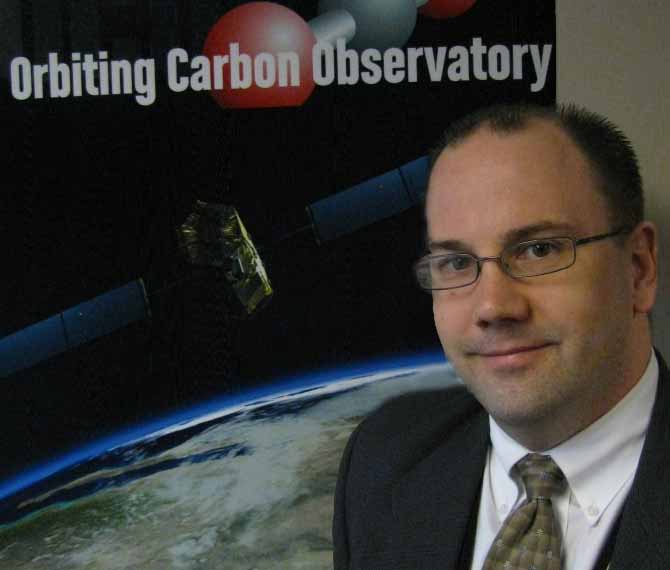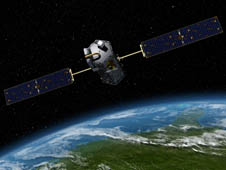Welcome to the NASA HQ blog for the Orbiting Carbon Observatory, or OCO.
The objective of this blog is to provide readers a first-hand account of the experience associated with the launch of a NASA satellite. This will include all of the pre-launch events, launch night itself, and near-term post-launch activities. I’ve been working for NASA for almost five years, but this will be my first launch. So, as I experience the challenges and triumphs of the OCO launch campaign, you will be along for the ride!

Let me provide a little background on who I am and what I do. My name is Eric Ianson and I am the program executive for OCO. As program executive, I am the primary point of contact at NASA Headquarters for the programmatic aspects of the mission. This means I am responsible for tracking the mission’s cost, schedule, and performance against NASA established requirements. But in a broader sense, I am an advocate, advisor, sounding board, liaison, counselor, “gofer”, secretary, etc. It’s a great job, as it affords the opportunity to play many different roles (including blogger) for the world’s premiere space agency.
So what’s this mission all about? OCO is NASA’s first satellite dedicated to studying atmospheric carbon dioxide. The mission will help scientists determine carbon dioxide’s sources, or the places on Earth where carbon dioxide is being added to the atmosphere, and also its sinks – where it is being removed.
 Carbon dioxide is central to the issue of climate change, because there has been a rapid rise (especially over the last 50 years) of this important greenhouse gas, due to human influences, such as the burning of fossil fuels and deforestation. The mystery of carbon dioxide is that we know approximately how much carbon dioxide is released into the atmosphere each year from human activity, but we can only account for about half of the carbon dioxide that doesn’t remain in the atmosphere. Given the heightened awareness of carbon dioxide’s role in climate change, the planned launch of OCO on February 24, 2009 is very timely.
Carbon dioxide is central to the issue of climate change, because there has been a rapid rise (especially over the last 50 years) of this important greenhouse gas, due to human influences, such as the burning of fossil fuels and deforestation. The mystery of carbon dioxide is that we know approximately how much carbon dioxide is released into the atmosphere each year from human activity, but we can only account for about half of the carbon dioxide that doesn’t remain in the atmosphere. Given the heightened awareness of carbon dioxide’s role in climate change, the planned launch of OCO on February 24, 2009 is very timely.
I look forward to staying in touch through this forum and hope this blog provides you with a better understanding of the huge effort it takes to launch a NASA mission and the rewards when it all comes together. I’ll be posting again soon!
For specific details on OCO science and the mission, please visit the NASA’s OCO website:
https://www.nasa.gov/oco

Your blog was very interesting to read and I hope the mission gives NASA all the information it needs to discover what happens to the carbon dioxide that does not remain in the atmosphere and hopefully control climate change. I look forward to getting more updates as time goes by. Good luck
Hi,
With the launch of the OCO coming up in a about a week will the launch be effected by the collision of the two satellites on Feb. 9th?
Thanks
Kurt
Hi Kurt,
Thanks for the question.
Based on the initial information we have about the debris cloud, the risk of it affecting the launch of OCO into its injection orbit is low. There is a potential though that OCO may need to maneuver at some point during its operational lifetime (months or years after launch). NASA has in place very robust, ongoing procedures to identify possible collisions with enough lead time (days) to maneuver out of harm’s way.
So the short answer is: The launch for OCO is proceeding as planned.
Regards,
Eric
wow who has the time to write such a long terrific article you must be pretty busy but im glad u wrote this